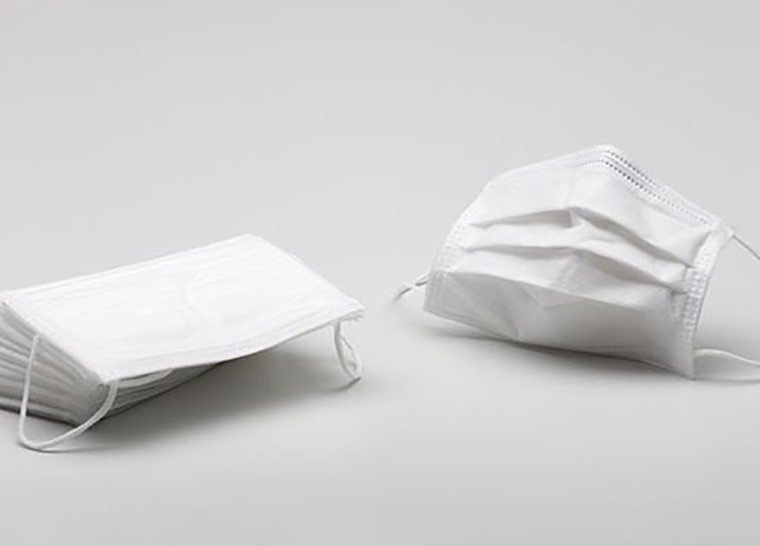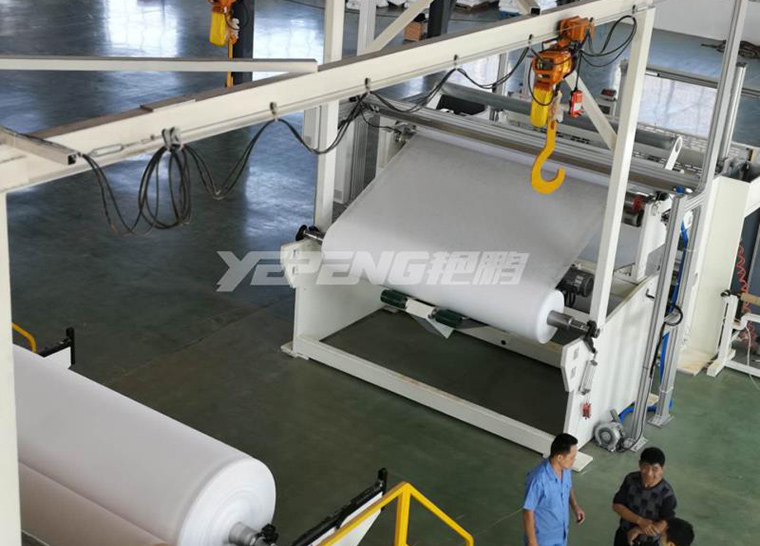
Zhejiang Yanpeng Nonwoven Machinery Co.,Ltd.---A professional non woven production line Manufacturer
11. 2020
Quick service response time
Provide 7x24 hours of uninterrupted
service for you
Professional one to one customer service
Escort your production
Address: Wanchuan Road, Binhai New District, Pingyang County ,Zhejiang, China
Tel: 0086-577-58198758
Fax: 0086-577-58198759
Fill in your project information
In the fight against the novel COVID-19, the protective clothing used by the vast numbers of medical workers and people are hundreds of millions of masks and protective clothing, which are mainly processed by spunbonded and melted nonwovens.
What is nonwovens?
According to the national standard GB / T 5709-1997, nonwovens, commonly known as non-woven fabrics, refer to sheet fabrics, fiber webs or wadding mats (excluding paper, woven fabrics, tufted fabrics, sewn fabrics with stitched yarns and felt products with wet shrinkage) made of oriented or randomly arranged fibers through friction, cohesion or adhesion or combination of these methods. The fibers used can be natural fibers or chemical fibers; they can be short fibers, filaments or filaments formed on the spot. In order to distinguish wet nonwovens from paper, it is also stipulated that in the fiber composition, the fiber with aspect ratio greater than 300 accounts for more than 50% of the total mass, or the fiber with L / D ratio greater than 300 only accounts for more than 30% of the total mass, but its density is less than 0.4g/cm3.
"Heart layer" meltblown cloth of mask
Most masks are mainly composed of three layers of nonwovens, the inner and outer layers are spunbonded fabrics (s), and the "heart layer" is meltblown nonwovens (m), which are the key core materials for mask to achieve barrier and protection function. Spinning melt composite nonwovens also have SMS, SMMs, ssmms and other varieties.
Characteristics of Nonwovens
1. Materials between the four flexible materials of traditional textiles, plastics, leather and paper. Different processing technologies determine the performance of nonwovens. Some nonwovens are like traditional textiles, such as spunlaced nonwovens, some are like paper, such as dry papermaking nonwovens, and some are like leather, such as PU leather based nonwovens.
2. The appearance and structure diversity of nonwovens. The diversity of raw materials and processing technology of nonwovens determines the diversity of appearance and structure of nonwovens. In terms of structure, most nonwovens are mainly composed of fiber network structure. There are single-layer thin mesh geometry structure with two-dimensional arrangement of fibers, three-dimensional network geometry structure of fibers, fiber grid structure formed by winding of fibers and fibers, structure of bonding between fibers and fiber dimensions at the junction point, and chemical adhesive connecting fiber junction points In terms of appearance, nonwovens include cloth, mesh, felt and paper.
3. The properties of nonwovens are various. Due to the diversity of raw material selection and processing technology, the diversity of nonwovens performance is inevitable. Some materials are very flexible, some are very hard; some materials are very strong, while others are very weak; some materials are very dense, while others are very fluffy; some materials have thick fibers, while others are very fine. Therefore, the performance of nonwovens can be designed according to the use of nonwovens, and then the corresponding technology and raw materials can be selected.
Classification of Nonwovens
The types of nonwovens can be classified according to web forming, reinforcement or application. According to the web forming methods, it can be divided into dry method (mechanical carding, air flow forming), wet method (circular mesh, inclined mesh) and polymer spinning (spunbonded, melt blown, membrane cracking, electrostatic method). According to the way of reinforcement, it can be divided into mechanical reinforcement (needle punching, spunlacing, stitching), thermal bonding (hot rolling, hot air, ultrasonic bonding) and chemical bonding (impregnation, spraying, foam, printing, solvents, etc.). It can be divided into medical and health materials, filter materials, geosynthetics, vehicle materials, building materials, electrical and electronic industry materials, packaging materials, agricultural materials and household decoration materials, etc., which are applied in all aspects of our daily life.

11. 2020

11. 2020

11. 2020

10. 2020

